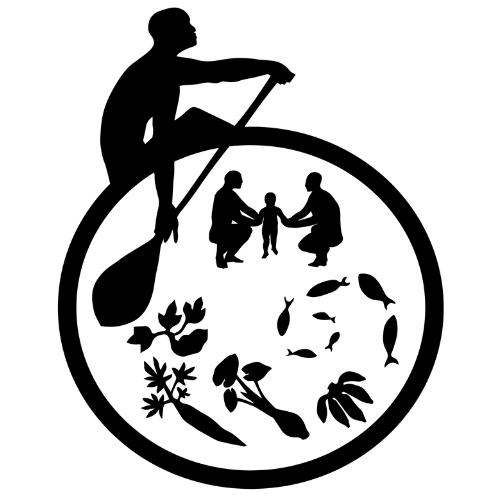
As 2013 winds down and I reflect on the past year, I’m struck by the impressive progress made by the CHL team. This quarter’s newsletter highlights important steps made toward successfully addressing each CHL objective- from developing a data system, to implementing sustainable community-based interventions, to training the next generation of researchers. And, as you’ll notice in the newsletter, all these activities have been carried out with smiles! The successful virtual meeting held in November that showcased each jurisdictions work, is testament to the teams’ commitment to promoting healthy lives in the Pacific region.
I’m looking forward to seeing the team in American Samoa this summer!
Andrea Bersamin, PhD
CHL Co-Investigator, University of Alaska Fairbanks
From the editor
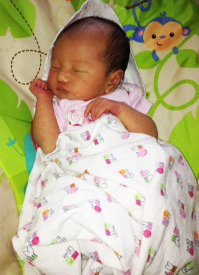
We’re excited to bring forth to you one of the largest newsletters that CHL has produced! In this issue we highlight a number of major milestones for the CHL team and CHL trainees. We also present to you an update on the exciting work of each jurisdiction. CHL is picking up speed!
Oh, but before we go too far, we welcome little Mikaela into the CHL family. Mikaela is the second child of Dr. Jodi Leslie, CHL’s Education Coordinator. We know her mom is feeding her CHL-approved nutrition!
CHL Food & Activity Logs
Dr. Carol Boushey
At the end of October, another CHL milestone was reached. The Hawai‘i jurisdiction delivered their first 25 completed Food & Activity Logs to the Nutrition Support Shared Resource (NSSR). Following months of data collection in the field, many of the CHL staff redirected their efforts to entering the information provided by parents and caretakers of the children enrolled as CHL participants. Several of the CHL objectives center on the information recorded in the Food & Activity Logs (fondly referred to as the FAL). CHL staff were trained to use the PacTrac3, a web-based program, specially adapted to capture the CHL goals for diet and physical activity. To make sure that everyone in each of the jurisdictions is entering data the same way, several layers of quality control checks are being followed. To pass the first level, individuals enter information from sample FALs derived from compiling some of the more challenging entries from real CHL parents and care providers. Staff at the NSSR check the logs and designate a score of “Pass” or “Do again”. If a data entry person gets the latter score, notes are provided outlining the areas needing to be addressed. The next level of quality control check is at the entire jurisdiction level. This step involves the jurisdiction data coordinators sending their first 25 completed FALs to the NSSR. When Kathleen Johnson, Hawaii Jurisdiction, handed the completed FALs to Donna Au, Supervisor of the NSSR, the event was a momentous occasion for CHL.
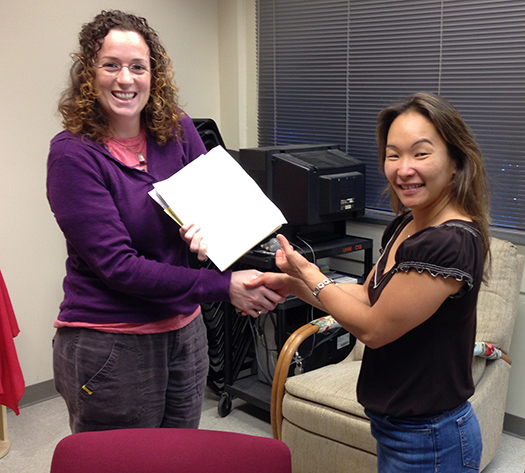
Experiences from CHL Scholarship Students
Okinawa – Japan Association for International Health Congress
Sam Foulchag [Yap]
I was invited to the Japan Association for International Health Congress Annual Meeting that took place in Okinawa from November 1st to the 5th. Representatives mainly from developing countries from all over the world and I, along with two other colleagues from the Federated States of Micronesia (FSM), were asked to represent our nation in the event. Okinawa was of interest because of their success in community development and so we, representatives from developing nations, are given the chance to learn ways to have sustainable development in our nations. The main focus of the conference was “Education in Sustainable Development” and so it was very beneficial for us to learn from each other, having the same experiences and struggles as developing nations. I gave a short talk about the FSM; general information, brief history, and the overall condition of the health system in the FSM. Back in December of 2010, 9 students from the College of Micronesia, including myself, were selected to participate in a field study in Okinawa that was funded by the Sasakawa Peace Foundation. We were taught some very useful tools to study a community or group of people effectively, and then we went out and practiced those skills in certain communities in Okinawa in hopes that we will apply what we have learned to our communities upon returning. Based on the last trip, I was also asked to share what I learned from the trip on interventions that we as a group had implemented in our communities using the skills and tools we learned, how we are promoting “Education in Sustainable Development“ in our communities, and what we hope to accomplish in the long run. Most of all, I was just so happy to be there. There was so much to learn with so many presentations. I had to try and absorb what I could during that short time. I believe good health is the key to sustainable development, and if everyone cooperates and shares in that same vision, anything is possible.

Hilo – Student research conference at the University of Hawai‘i at Hilo
Aifili John Tufa [American Samoa]
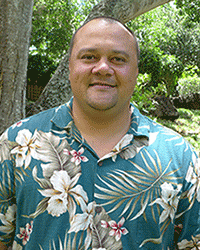
In the summer of 2013, Francine Amoa, a 3rd year pharmacy student and I, conducted a study to examine factors that influence consumers’ purchase of over-the-counter (OTC) drugs in American Samoa. This study was driven by our interest and concern regarding OTC drug misuse and safety. We were curious about: How much knowledge was there on OTC among American Samoa residents? Where is information on OTC obtained? Was there patient counseling/education on OTC? The study used a structured survey with interview questions. It took four weeks to collect data at local stores and various community locations on the island of Tutuila. Findings suggested factors influencing consumer’s OTC purchase which included familiarity with brand name, perceived effectiveness, and by reading the label. Another interesting finding was a low percentage of participants claiming that their purchase was influenced by advice from a healthcare provider. With this data, we can now look more into depth of knowledge and behavior of residents on safe use of OTC drugs-for example, how do they take it, are they aware of potential interaction, are they having this conversation with their doctor? Another aspect for more research is to determine the health literacy of the community in terms of OTC and other health related issues. We submitted an abstract and were invited to present at the first student research conference at the University of Hawaii at Hilo campus, sponsored by the Office of Applied Learning Experiences (ALEX), on November 1, 2013. The conference focused on highlighting research activities carried out by students. Faculty members outside of the presenter’s discipline judged presentations, using generalized criteria that focus on research process, presentation, and significance of research findings. Francine Amoa and I took first place over-all out of 46 presentations.
Congratulations to Sam and Aifili for their accomplishments!
Finally, on Wednesday, November 20th, 95 CHL employees and our External Advisory Committee joined the CHL Coordinating Center for a mid-work-year on-line meeting. About 10 presentations were given to align everyone’s understanding of our group progress and our next steps. Our next big get together will be in American Samoa June 5-12, 2014.
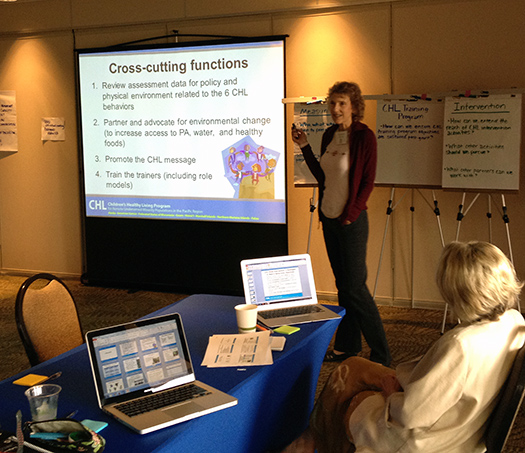
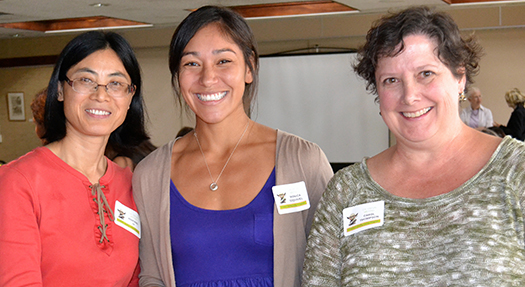
Alaska
CHL Team Alaska
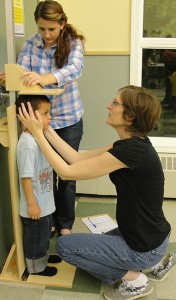
CHL Alaska recently partnered with Best Beginnings, a community partnership that works to coordinate people and resources to ensure that all children in Alaska start school ready to succeed. Best Beginnings sponsored a Family Health Fair on September 14th. The CHL Alaska team took advantage of the opportunity to network with other early childhood organizations in Fairbanks and was enroll additional children in the study. This event helped to inform the community about the CHL initiative.
Additionally, CHL Alaska has partnered with Thread, a statewide network of professionals who provide early care and education services to families and educators to ensure that they have the training and support to guide young children to lifelong success. Together, our goal is to train community members to teach parents, providers, and food service staff how to prepare healthy meals and live an active lifestyle in Alaska. We aim to implement this training early next year.
The Alaska team was pleased to welcome Dr. Rachel Novotny and Dr. Marie Fialkowski to Alaska this October for our annual Standardization and Training event. Eight new team members in Anchorage were trained to collect height, weight, and waist circumference measurements. The formation of this new measurement team will make data collection much more efficient in our temporal and delayed-intervention communities. Meanwhile, the Alaska data entry team has completed data input for other forms and has shifted all of its attention to entering Food and Activity Log data.
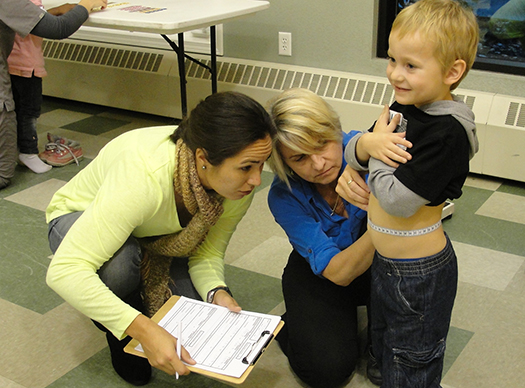
Finally, CHL Alaska had great success at a recruitment event with the Fairbanks Native Association. With the team working together, we enrolled 75 more children in the program! This event put us one step closer to our goal of finishing baseline data collection by December.
With our new community partnerships and motivated team members, CHL Alaska is making great progress in all aspects of the project.

American Samoa
CHL Team American Samoa
Aua Village Walk, American Samoa
Saturday, September 21, 2013; the first rays of the rising sun glitter off Aua’s lagoon and filter through the breadfruit trees, reaching yawning, smiling faces of a growing crowd gathering on the sandy ceremonial grounds (malae) of Aua village. This coastal village with its 2000-plus population (2010 census), lying on Pago Pago Bay about a mile east of the Star Kist Tuna factory, is one of the CHL intervention sites in American Samoa. Today is to be the “Aua Village Walk”, the first planned “intervention” in American Samoa. The objective is to “provide residents an opportunity to join their neighbors in a family-fun recreational activity, reap the benefits of walking and to promote a healthier lifestyle.”
The event was carefully planned in advance through partnership and support from the village and its leaders (chiefs’ council, church ministers, and village mayor) and various America Samoa government departments to ensure its success and safety. By 6:30am the adults and children had all signed in and received their healthy life wristbands, a prayer was given and the walk with about 200 adults, youth and children began down the narrow highway towards Onesosopo Park, about one mile away. Road safety was assured and there were also water stations along the way.

Once at the park a number of fun filled physical activities occurred for the rest of the morning until 12:00 when the event concluded. Activities included parachute games, hula hoops, dance tag, and many other activities. In addition, healthy snacks and fruit smoothies were distributed, and nutrition lessons were given from staff of EFNEP (Expanded Food and Nutrition Education Program). It was also used as an opportunity to get more BMI and body fat percent measurements. Sporting equipment, such as volleyballs, footballs, soccer balls and Frisbees were distributed to village participants as an extra stimulus to families to continue to engage in fun family physical activities on a regular basis to build strength and health.
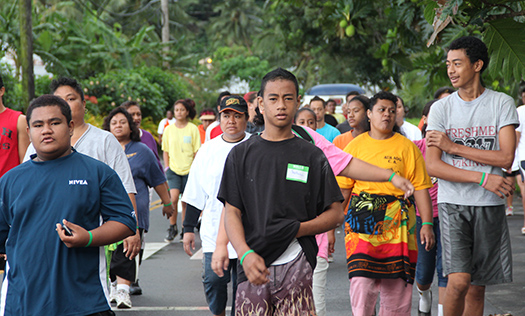
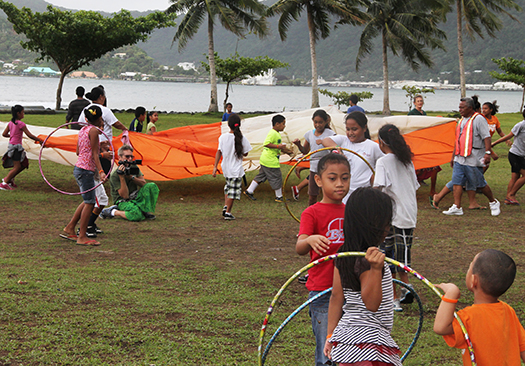
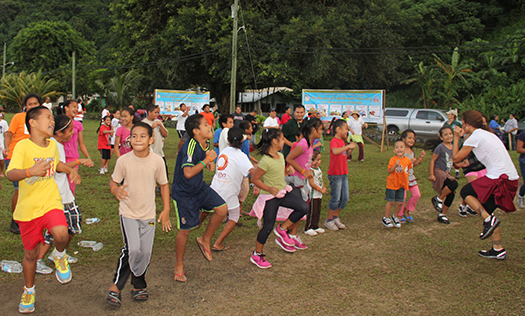
From the perspective of the village and the CHL team at the Division of Community and Natural Resources at the American Samoa Community College “The Aua Village Walk” was definitely a successful fun, motivating “kick off” to begin the intervention stage of the CHL program in American Samoa!
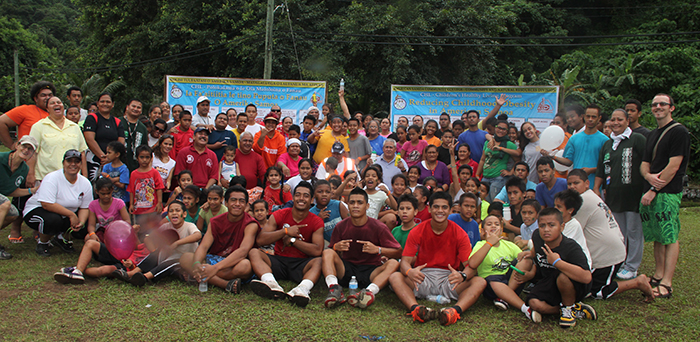
Commonwealth of the Northern Mariana Islands
CHL Commonwealth of the Northern Mariana Islands
TASA on the MOVE!!
The 2013 Summer Program kicked off with a GREAT BIG BANG on Saturday, July 27th in the villages of Tanapag and San Roque. The summer program provided a wide range of activities that encouraged parental involvement. Children between the ages of 6-13 were able to enage in various educational and physical activities such as: reading, arts and crafts, technology, and health and fitness, which involved dancing, swimming, biking, hiking, and trailblazing.
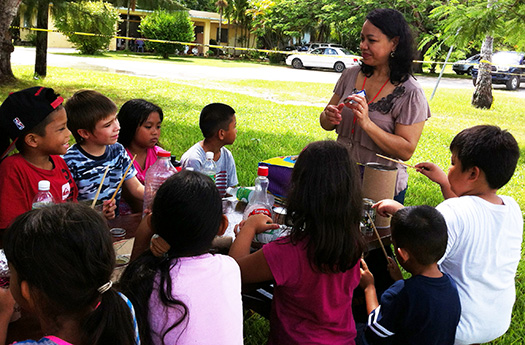
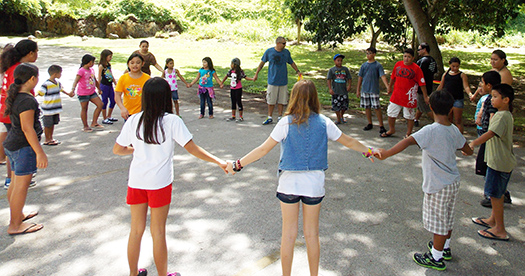
Aside from dancing and swimming, the children were able to partake in cultural day festivities held at the Capital Hill baseball field. Everyone gathered to celebrate the diversity of cultures in the Marianas. As part of the celebration, the TASA camp members joined a friendly game of tee-ball. The adults cheered with excitement as the children (ages 6-8) enjoyed some physical activity in a fun game of tee-ball.
In addition, the TASA camp attended the 2nd annual Lets Move Marianas expo held at the Ada Gymnasium. The children visited various booths that promoted a healthy living lifestyle, such as the cooking demonstration conducted by NMC-CREES EFNEP Program, the physical activity demonstration by Get Fit CNMI, and finally an obstacle course with the Northern Marianas Athletics Association – TAGA Kids Athletics Program.
With all the FUN filled activities that encouraged the camp participants to run around, they also managed to slow their pace down to help beautify their environment. The camp leaders squeezed a couple of hours for planting beautiful flowers and trees at the Paupau Beach Park located in San Roque.

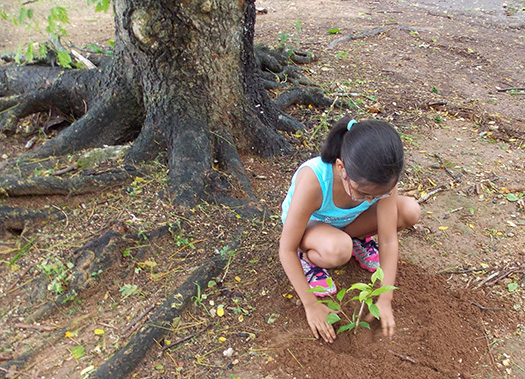
The 2013 summer camp will soon come to an end; but the fond memories and new friendships will definitely continue to motivate team TASA to continue their efforts in promoting various activities that encourage healthy living in their communities.
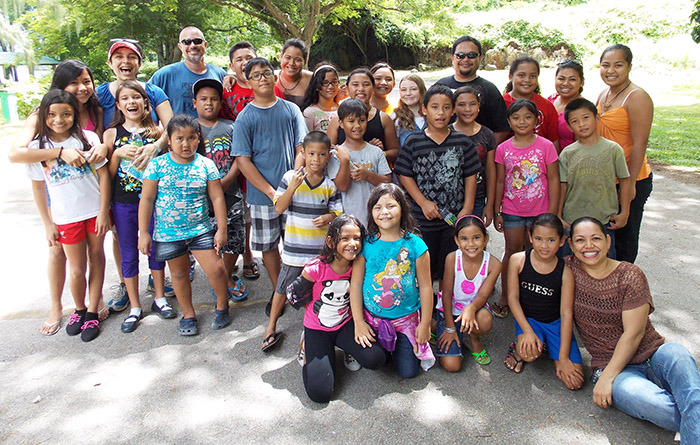
Freely Associated States of Micronesia
CHL Team Freely Associated States

The FAS ohana (family) is almost complete, as we recently welcomed a new addition to our circle; Ms Alice Ehmes (FAS Administrative Assistant). Alice attended the College of Micronesia-FSM. She has lived and worked in Hawaii for nine years, and has worked in two UH offices over the past eight years. She is a Pohnpeian national. These attributes combined make her a definite asset to the FAS CHL team!
The FAS team is almost ready to implement a regional prevalence survey across the Freely Associated States! Pohnpei will serve as the first jurisdiction where the survey is carried out. Another week of standardization, measurement and training was held in Kolonia town from August 26-31. Five more persons participated; this included three local Pohnpei team members who were successfully standardized. During this meeting, local Pohnpei team members were also provided a modified human subjects training to ensure that proper procedures, measures and conduct are followed and observed during the study, as well as to ensure that the rights of participants are protected.


Finally, we are saddened to report the loss of a member of our extended CHL family. Jolly Billen, husband to Yvonne Pangelinan, our CHL outreach assistant based in Chuuk, passed earlier this month. Jolly was an avid supporter of CHL activities and through his connections in Chuuk was a tremendous help in setting CHL up in Chuuk. Our condolences, thoughts and prayers are with Yvonne and her family during this difficult time.
Guam
CHL Team Guam
Non-communicable Disease Consortium (NCD Consortium)
Through active collaboration with the community partners, a NCD Consortium was established to reduce the burden of non-communicable diseases such as heart disease, stroke, cancer, diabetes, asthma, etc. The program addresses smoking, nutrition, alcohol, physical activity and obesity (SNAPO). The Guam CHL team has been very active in the NCD Consortium.
Dr. Yvette Paulino is currently the Chair of the Data and Surveillance Team and Dr. Bob Barber and Mark Acosta are Co-chairs of the Nutrition Team. All of the CHL associates represent the University of Guam in different working groups such as nutrition, physical activity, data and surveillance, alcohol, and policy. By having CHL representatives in these different working groups, we have managed to get many of the CHL objectives embedded into the five year strategic plan through 2018. Currently, we are working with the NCD Consortium to conduct pilot projects in our intervention villages. Long-term impacts will include island-wide activities and policy change.
Service Learning
Mandated by Public Law 28-41, Service Learning is a new part of our island community, which consists of all Guam High School Students to complete 75 hours of Service Learning to graduate. Service Learning allows students to utilize what they have learned in the classroom to real-life experiences while giving back to the community. Students will not only learn the practical applications of their studies, but also become actively contributing citizens through the services they perform.
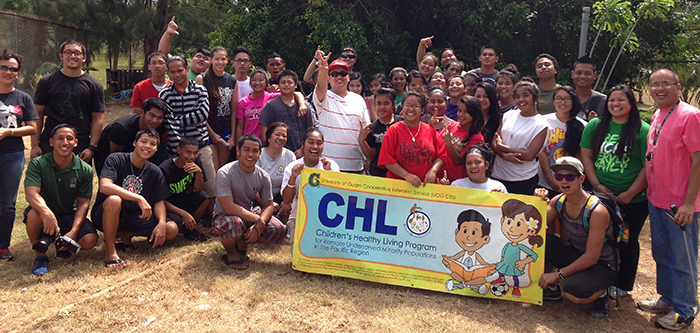
Service Learning can be utilized in various settings, such as schools, community based, and faith-based organizations. In the last 2 months, the Children’s Healthy Living Program team has offered Service Learning hours in “Role Modeling” and “Starting Your Garden” to Okkodo High School with 90 students participating and at Simon Sanchez High School with 47 students. The Gardening Workshop topics that were presented to the students are the following: Soil Nutrients, Container Gardening, Seed Propagation, Propagation by Cuttings, Mulch, Sheet Mulching, Compost, Raised Beds, and Water.
Both Okkodo and Simon Sanchez High School students showed interest in wanting to learn about gardening. Students displayed effortless role modeling behaviors and are eager to help others with what they have learned. Upcoming trainings are sure to come.
Hawai‘i
CHL Team Hawai‘i
Aloha!
Monica Esquivel and Ashley Morisako, the Hawai‘i CHL trainees, have been busy working on their CHL projects. Monica has been collecting baseline data for her project and Ashley is in the process of entering the data she collected over the summer. Below are summaries of the data collection for each of their projects. Thank you Monica and Ashley for all your hard work!
Hawai‘i Child Care Center Wellness Policy Implementation Project: Data Collection
Monica Esquivel MSRD
The goal of my dissertation research and CHL trainee project is to measure the effects of wellness policy implementation on the Head Start physical activity and nutrition environment and to assess how these policy and environment changes influence the fruit and vegetable intake of Head Start children and their weight status. To do so both classroom level data and individual child data is being collected at 24 Head Start classrooms before and after policy implementation. Baseline data collection began in April 2013 using the Environment and Policy Assessment and Observation (EPAO) tool to assess the nutrition and physical activity policies and environments of 24 Head Start classrooms on Oahu. In addition, teachers (n=48) from each classroom were asked to complete a survey on their attitudes, beliefs and knowledge regarding nutrition and their role in promoting healthy eating. With the return of keiki to Head Start in August I began measuring height, weight and plate waste at each of the classrooms. To date 316 children have been measured and dietary intake assessed using a weighed and observed plate waste method. In March of 2014 I will repeat the baseline measurements of each child and classroom. I hope to detect any differences in change of BMI and change in fruit and vegetable intake between the intervention and control classrooms, as well as any relationships between change in EPAO and teacher survey scores with these observed changes in BMI and diet.
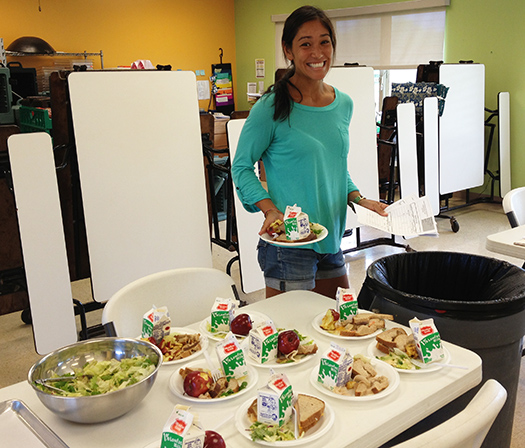
Evaluating the Effectiveness of the Farm to Keiki Curriculum
Ashley Morisako
My name is Ashley Morisako, and I am a second year CHL Trainee in the Master of Public Health (MPH) Native Hawaiian and Indigenous Health Program at the University of Hawai‘i at M?noa. My study seeks to evaluate the effectiveness of Farm to Keiki (F2K), a garden-based preschool curriculum, on its potential to overcome obesity related behaviors. The primary aims of this study are to evaluate if F2K modifies: 1) children’s awareness of different fruits and vegetables; 2) food preferences for fruits and vegetables; and 3) overall consumption of fruits and vegetables. This study employs quasi-experimental crossover design with repeated measures (pre-curriculum, mid-curriculum, and post-curriculum) for a total of nine weeks.
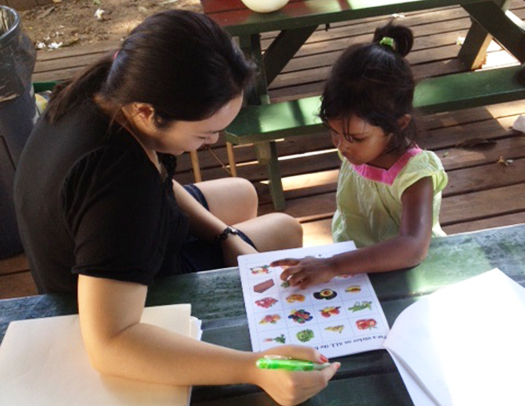
Based on parental consent, all eligible children were administered the same student survey individually at the three assessment time points. These surveys were developed specifically for the F2K curriculum based on the skill set of preschool aged children to assess children’s knowledge, awareness, and preferences for fruits and vegetables (see picture below). Parents were asked to fill out a parent survey regarding their eating habits as well as their child’s eating habits and preferences. The National Institutes of Health’s Diet History Questionnaire (DHQ), a tool to assess child consumption of fruits and vegetables as perceived by parents, was included in the parent survey. Additionally during this time, a plate-waste/direct observation methodology was implemented to objectively measure children’s fruit and vegetable intake during school lunch.
Some next steps in regard to my CHL Project include conducting a preliminary data analysis and interpretation of my results with the teachers and directors of the preschool. Additionally, I will present the data at a parent workshop in which these parent will be able to contribute to the findings. Shortly after, these results will be summarized and disseminated in the form of a parent newsletter. Additionally, I will provide recommendations and lessons learned from this experience with the director of the F2K curriculum and the CHL program.
